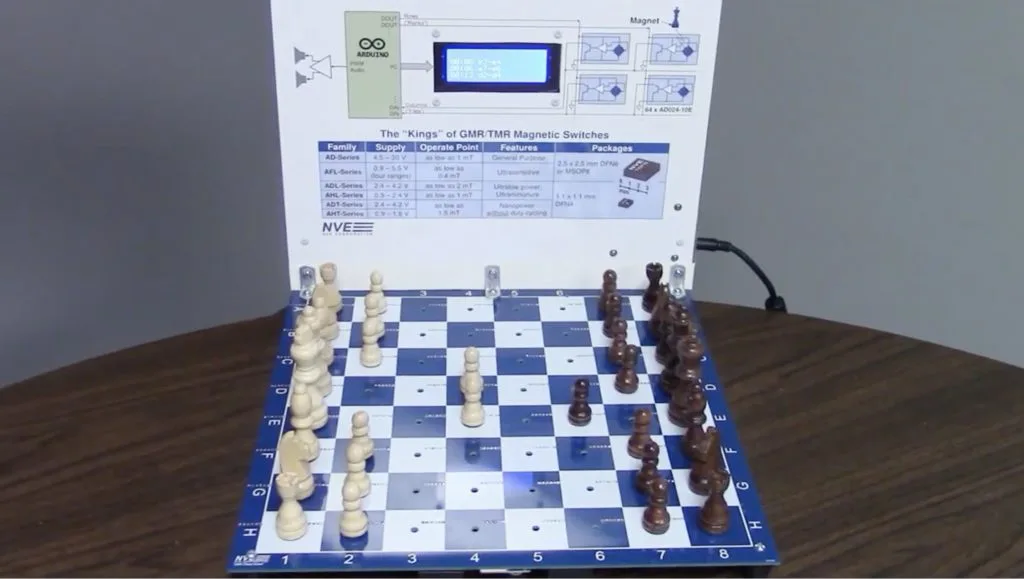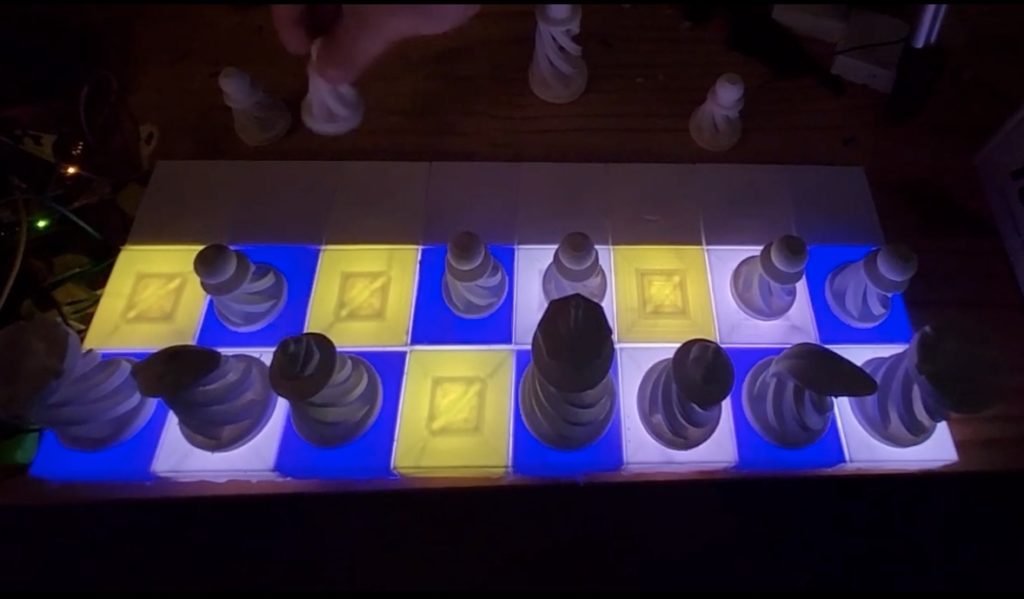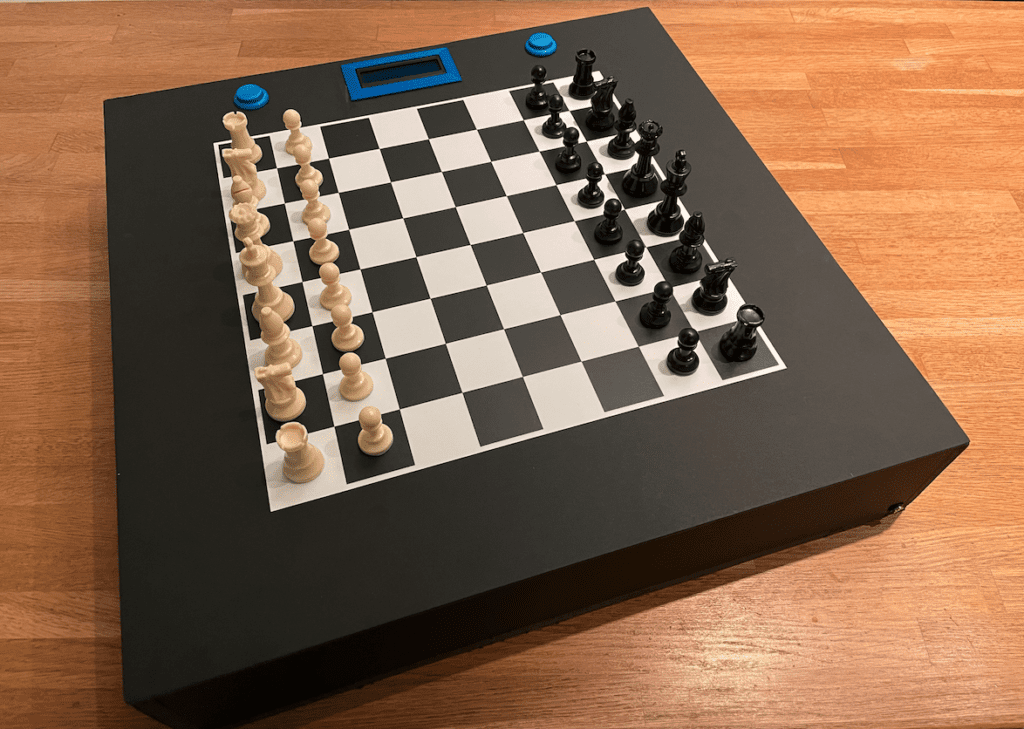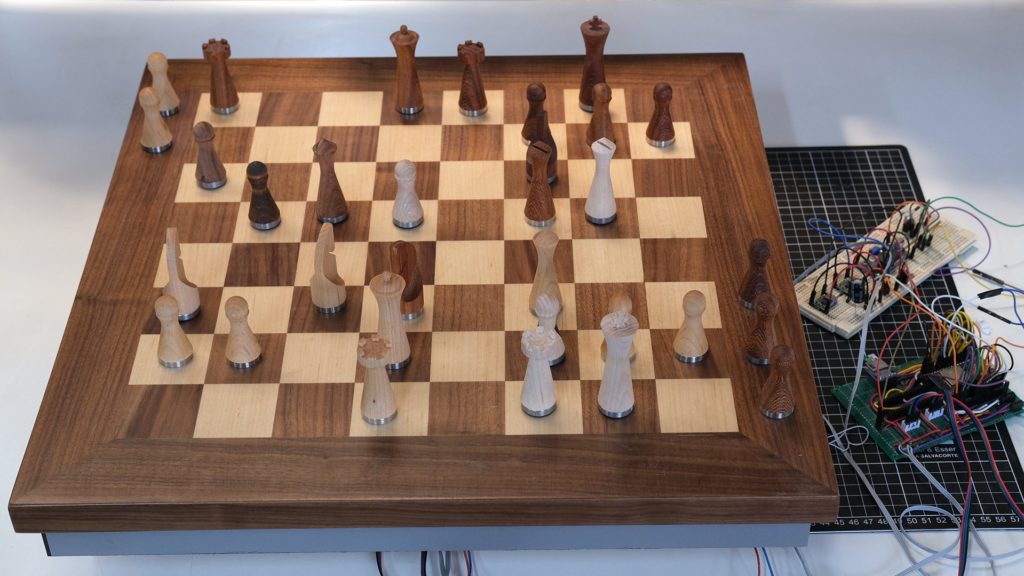Schlagwort: Automated Chessboard
-

Practical magnetic switches make this electronic chessboard possible
Reading Time: 2 minutesYou can play chess just as easily on a $2 set from a thrift store as you can on a $2,000 ornate set from a bespoke retailer. But that doesn’t stop people from building or buying those fancy chess sets. If you’re the DIY type, you may even be interested in an…
-

This illuminated chessboard displays possible moves
Reading Time: 2 minutesChess is a tricky game to learn, even before you get into various strategies and tactics. The simple act of memorizing the different piece’s moves can be overwhelming to people new to the game. To make it easy to determine where pieces can go, Redditor Bakedbananas is building an illuminated chess board…
-

This special chessboard brings digital opponents into the physical world
Reading Time: 2 minutesArduino Team — March 3rd, 2022 Chess still remains an extremely popular game but finding someone to play against can be a struggle, especially when it’s done in-person instead of through a screen. Greg06 on Instructables has created an automated chessboard that can not only tell where specific pieces are moved, but also play against…
-

No opponent nearby? Not a problem! This automatic chessboard lets you play others remotely
Reading Time: 2 minutesArduino Team — June 10th, 2021 Chess is an excellent game to play with friends, but what if you don’t have any to compete against nearby? This is what prompted maker Carlos Pendas to create an automatic chessboard that’s not only able to record which pieces got moved, but even move the pieces itself. This…



